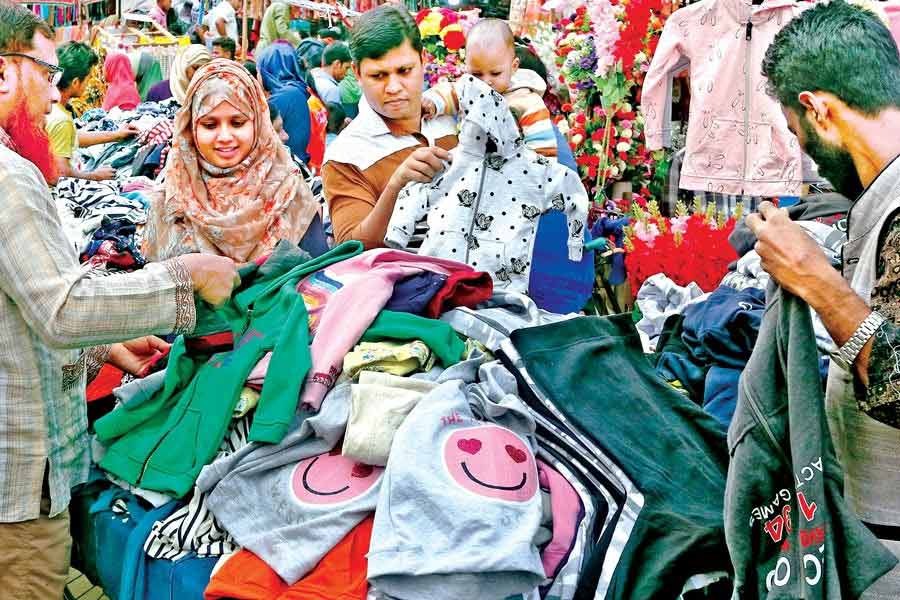
Published :
Updated :

Is not it anachronistic that the country with a rising share in the global export of fashionable winter wear still has to import second-hand warm clothes? In 2021, a senior additional secretary of the commerce ministry went so far as to say that import of 'old clothes for use of local markets is a disgrace for a country like Bangladesh'---one that is the second largest apparel exporter after China in the world. A patriotic citizen could agree more with him. The country exported sweater worth $5.64 billion out of $42.61 billion it earned from apparel export in the fiscal year 2021-22. If the jacket, suits, woollen wears are included, the winter clothes' share will be more than the 13.23 per cent share sweater has in the total readymade garment export.
To keep up with the transition from a least developed country to a lower-middle-income one, the commerce ministry moved to incorporate new provisions to its "Import Policy Order 2021-24" in order to limit import of old clothes in 2021 before slapping a ban on import from 2026. To that end the ministry intended to slash the number of importers of second-hand warm garments to 3,000 from 6,000. It appears the number of importers remains at 5,000 or so. Then there was a plan to halve the imported quotas for all categories of winter wear.
The brisk business old winter clothes now enjoying on the capital's footpath and elsewhere, however, shows that there is a great demand for these articles, particularly when bone-chilling cold is sweeping the length and breadth of this country. Usually, the country's north suffer shivering chill every year but urban centres like the capital at the same time experience a mild winter almost enjoyable. But this time, it is a hostile winter that has announced its presence early in the New Year. The poor and low-income people are at a greater disadvantage due to this biting cold. Their purchasing capacity drastically eroded in the post-pandemic economic crunch time, this segment of people cannot afford even the new winter wear that find their way on to footpath vendors' lots in excess of the export orders.
The imported old garments are comparatively cheaper ---some with holes or damage are damn cheap. So people with little means are now crowding the places where such articles are on sale and rummaging through heaps of such used clothes to find the suitable ones.
True the made-in-Bangladesh blankets and other fashionable winter wear like pullover, cardigans, jerseys, waistcoats, jackets and blazers are top grade. The extra items and those rejected for minor defects are cheaper for the middle class but not affordable for the low-income groups who are perilously on the brink of economic devastation. In a polarised society where economic disparities are widening instead narrowing, it is not easy to wish away disgraces like this.
There has to be prudent and effective social welfare programmes, as are prevalent in developed societies, in order to raise the standard of living of the lower classes. If the government cannot provide employment for the employable people, they should be allowed to enjoy social benefits like unemployment allowance. What is happening in this country is quite ominous. Even during the pandemic, the rich got richer and their number also went up but only at the cost of the low-income segments.
It is indeed horrific to think that people are collecting used clothes against the backdrop of Covid-19 pandemic. A report claimed in 2021 that old garments worth Tk 250 million were imported. Is that a huge amount? The used garments the amount fetches however may not be insignificant. Whatever may be the volume, the government can make an alternative arrangement by substituting those with locally produced new winter wear. This calls for political will and love for the distressed people at the bottom rung of society.
nilratanhalder2000@yahoo.com


 For all latest news, follow The Financial Express Google News channel.
For all latest news, follow The Financial Express Google News channel.